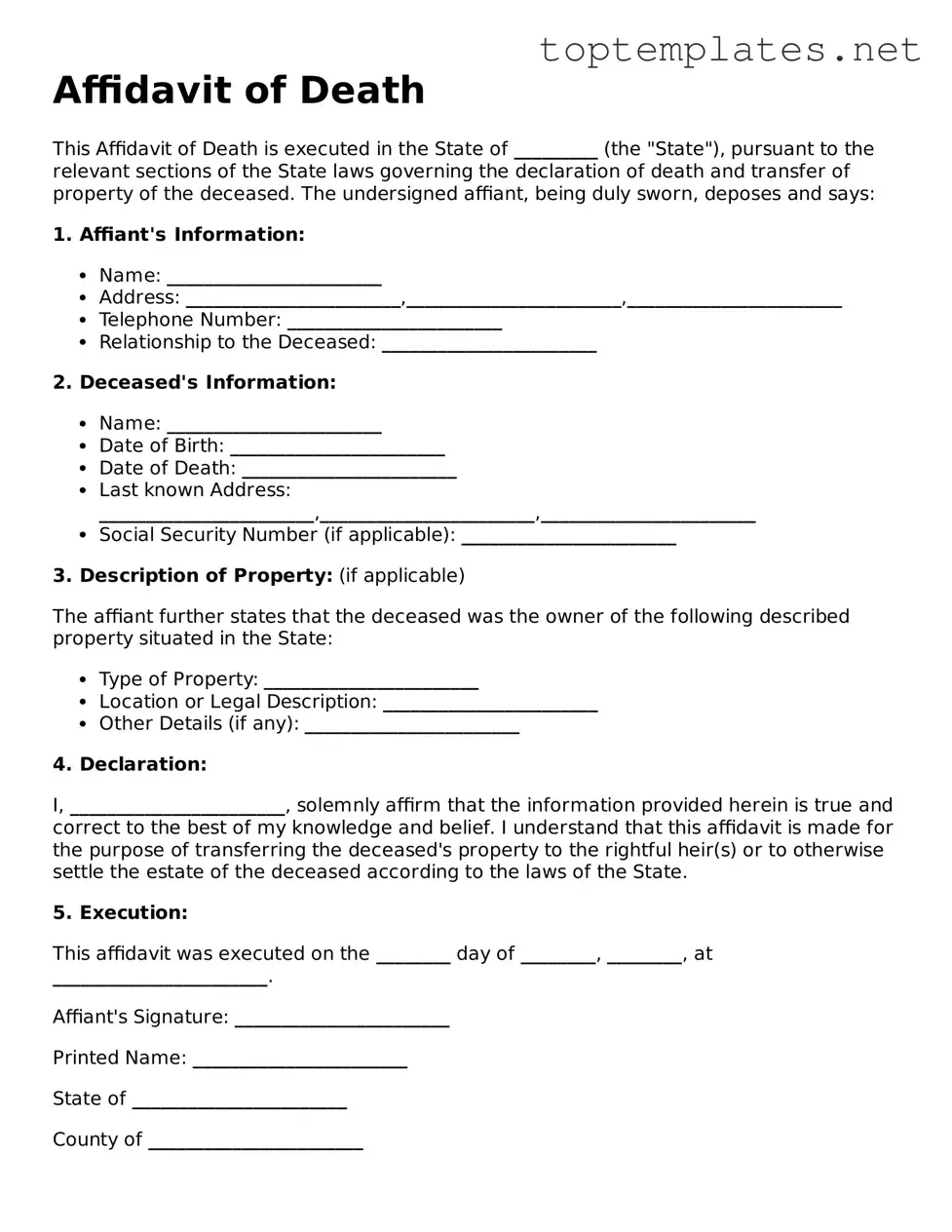Affidavit of Death
This Affidavit of Death is executed in the State of _________ (the "State"), pursuant to the relevant sections of the State laws governing the declaration of death and transfer of property of the deceased. The undersigned affiant, being duly sworn, deposes and says:
1. Affiant's Information:
- Name: _______________________
- Address: _______________________,_______________________,_______________________
- Telephone Number: _______________________
- Relationship to the Deceased: _______________________
2. Deceased's Information:
- Name: _______________________
- Date of Birth: _______________________
- Date of Death: _______________________
- Last known Address: _______________________,_______________________,_______________________
- Social Security Number (if applicable): _______________________
3. Description of Property: (if applicable)
The affiant further states that the deceased was the owner of the following described property situated in the State:
- Type of Property: _______________________
- Location or Legal Description: _______________________
- Other Details (if any): _______________________
4. Declaration:
I, _______________________, solemnly affirm that the information provided herein is true and correct to the best of my knowledge and belief. I understand that this affidavit is made for the purpose of transferring the deceased's property to the rightful heir(s) or to otherwise settle the estate of the deceased according to the laws of the State.
5. Execution:
This affidavit was executed on the ________ day of ________, ________, at _______________________.
Affiant's Signature: _______________________
Printed Name: _______________________
State of _______________________
County of _______________________
Subscribed and sworn to (or affirmed) before me on this ________ day of ________, ________, by _______________________, proved to me on the basis of satisfactory evidence to be the person(s) who appeared before me.
Notary Public/Commissioner for Oaths Signature: _______________________
Printed Name: _______________________
My commission expires: _______________________
